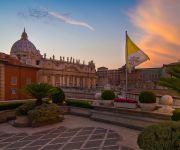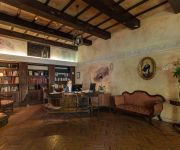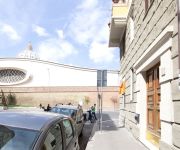Facts and Data
Webpages:
Official Unesco Page
View photos from OUR PLACE the World Heritage collection
Vatican State
The Holy See
Basis Data:
Unesco World heritage since: 1984
Size of heritage:
Coordinates:
Longitude: 12,457°
Latitude: 41,902°
Summary
The Vatican City, one of the most sacred places in Christendom, attests to a great history and a formidable spiritual venture. A unique collection of artistic and architectural masterpieces lie within the boundaries of this small state. At its centre is St Peter's Basilica, with its double colonnade and a circular piazza in front and bordered by palaces and gardens. The basilica, erected over the tomb of St Peter the Apostle, is the largest religious building in the world, the fruit of the combined genius of Bramante, Raphael, Michelangelo, Bernini and Maderno.
Location on Map
Show bigger map on Openstreetmap
Introduction
Vatican City, located within the city of Rome, is the smallest independent state in the world and holds great significance as the spiritual and administrative headquarters of the Roman Catholic Church. This UNESCO World Heritage site encompasses a rich history and a plethora of architectural and artistic treasures that attract millions of visitors each year.
History
The history of Vatican City dates back to the early Christian era when the site was known as the Circus of Nero, where Saint Peter, one of the twelve apostles of Jesus Christ, was martyred. In the 4th century, Emperor Constantine built the first basilica over Saint Peter's tomb, establishing the foundation of the Vatican as a religious center.
Over the centuries, the Vatican grew in importance, becoming the residence of the popes and the center of the Catholic Church. In the 15th century, Pope Nicholas V initiated the construction of the Vatican Library, which now houses an extensive collection of manuscripts and ancient texts.
During the Renaissance, the Vatican witnessed a period of artistic and architectural splendor. Pope Julius II commissioned the renowned artist Michelangelo to paint the ceiling of the Sistine Chapel, resulting in one of the most iconic masterpieces in the world.
Current State
Today, Vatican City is not only a religious and spiritual center but also a cultural and historical treasure. The city-state covers an area of just over 100 acres and is home to approximately 800 residents, most of whom are members of the clergy or the Swiss Guard, responsible for the security of the Pope.
The centerpiece of Vatican City is St. Peter's Basilica, an architectural marvel and the largest church in the world. Its grandeur is evident in the intricate details of its façade, the majestic dome designed by Michelangelo, and the stunning interior adorned with masterpieces by artists such as Bernini and Raphael.
Adjacent to the basilica is the Vatican Museums, a vast complex that houses an extensive collection of art and historical artifacts. The museums boast over 70,000 works, including ancient sculptures, Renaissance paintings, and Egyptian mummies. The highlight of the Vatican Museums is undoubtedly the Sistine Chapel, where visitors can marvel at Michelangelo's breathtaking frescoes.
Aside from its architectural and artistic wonders, Vatican City is also a place of pilgrimage for Catholics worldwide. The Vatican hosts numerous religious ceremonies and events, including the Papal Audience, where visitors can witness the Pope delivering his blessings and teachings.
Preservation and Significance
Vatican City's inclusion on the UNESCO World Heritage list in 1984 recognizes its outstanding universal value as a cultural and religious site. The Vatican has taken significant measures to preserve its heritage, including restoration projects, strict conservation guidelines, and the establishment of the Vatican Museums to showcase its artistic treasures to the public.
The Vatican's influence extends far beyond its physical boundaries, as it plays a crucial role in shaping the Catholic Church's teachings and policies. It serves as a symbol of faith, unity, and cultural heritage for millions of Catholics worldwide.
Conclusion
Vatican City, with its rich history, architectural wonders, and spiritual significance, stands as a testament to the enduring legacy of the Catholic Church. As a UNESCO World Heritage site, it continues to captivate visitors from all corners of the globe, offering a unique blend of art, history, and religious devotion.
Hotels and places to stay
Hotel Sant' Anna
Residenza Paolo VI
Relais Vatican View
Al Colonnato di San Pietro
Rome ApartHotel
Palazzo Cardinal Cesi
Borgo Pio Suites Inn
Alle Fornaci a San Pietro
Lunaria Suites Rome - Luxury In St. Peter
Vatican Bed & Breakfast
Videos from the area
Videos provided by Youtube are under the copyright of their owners.






















